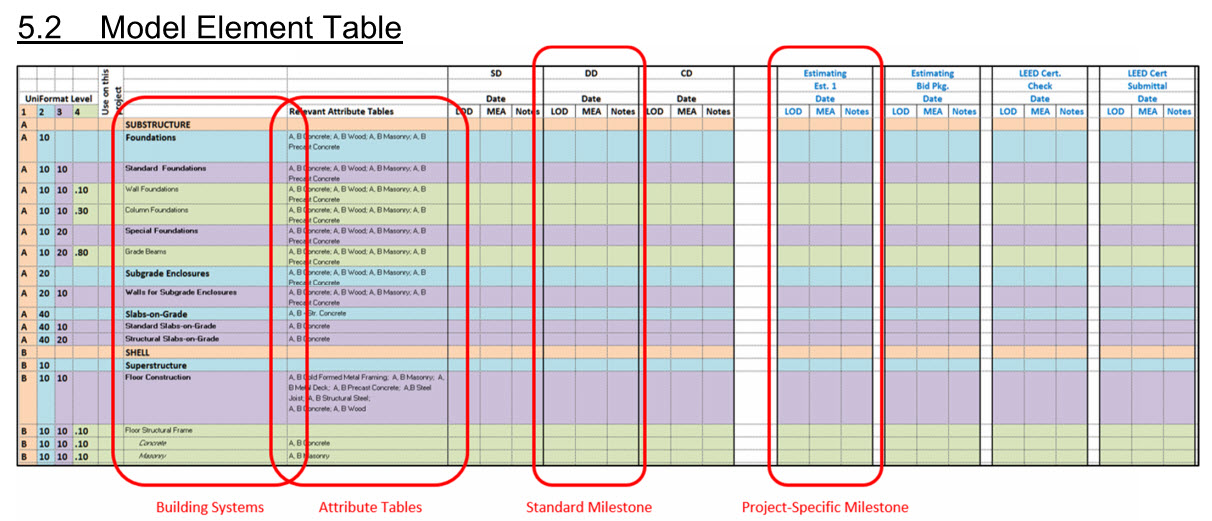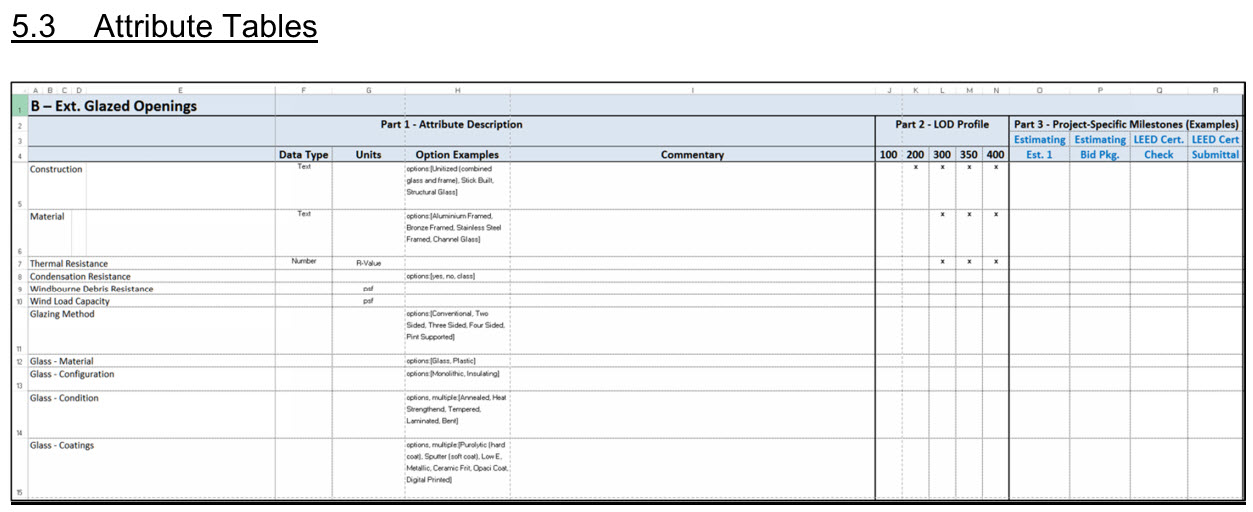One of the big news items coming out of the Spring 2015 BIM Forum in San Diego this past week was the announcement of the 2015 LOD (Level of Development) Specification Draft for public review. The draft is now available for download on the BIM Forum’s website.
The Level of Development (LOD) Specification is a reference that enables practitioners in the AEC Industry to specify and articulate with a high level of clarity the content and reliability of Building Information Models (BIMs) at various stages in the design and construction process. The LOD Specification utilizes the basic LOD definitions developed by the AIA for the AIA G202-2013 Building Information Modeling Protocol Form and is organized by CSI Uniformat 2010. It defines and illustrates characteristics of model elements of different building systems at different Levels of Development.
What is new in 2015?
The 2015 version should be considered a major update to the spec which now includes both a Part A and a new Part B.
Part A addresses element geometry and consists of narrative descriptions and illustrations of specific model elements at each LOD. Part A forms the bulk of the LOD Document. Part A has not changed except for minor grammatical corrections and formatting.
The new section is referred to as “Part B. Model Element Table, and Attribute Tables” and comes in the form of a separate excel spreadsheet attachment. Part B addresses associated attribute information contained in a workbook that begins with the Model Element Table which mirrors the layout of the Model Element Table in the AIA G202-2013 Building Information Modeling Protocol Form, and can be referenced by that document. The Model Element Table references Attribute Tables that contain attribute information for various building systems.

Each Attribute Table consists of three parts:
- Part 1, Attribute Description, lists Attributes relevant to the associated building system(s)
- Part 2, LOD Profile, correlates Attribute requirements with LODs from the Model Element Table. Attributes with pre-populated LOD Profiles show a correlation between Attributes and LODs that represents current practices of proficient BIM users.
- Part 3, Milestones, is used to mark the attributes required for specific milestones and deliverables.

Feedback received from the public review will be considered for incorporation into the final version which is anticipated to be released in the near future at a date as of yet to be determined.
First, however, during the conference intro it was announced that a change of direction was going to be made. Historically, the BIM Forum has taken the position that it is improper to use the term “BIM Model” since grammatically it is incorrect to state the word “model” twice in succession (Building Information Model Model). To dissuade people from making this mistake, at a past BIM Forum it was stated that every time someone mentions the phrase “BIM Model” a cute fluffy kitten would die. Since even the most ardent cat hater might find this to be objectionable, a change of position was announced that cute fluffy kittens will now be replaced with “Angry Cats.”
The first session was presented by David Fano, founding partner and Managing Director of CASE titled Delivering Data: Coordinating Building Information. He spoke not only about the industry’s reliance on paper documents, but also on how electronic drawing sets are constrained by paper’s limitations. Even the industry’s attempts to standardize data driven deliverables with the likes of COBie (Construction-Operations Building Information Exchange) have failed to exploit the true potential of building information databases.
For example, Fano contended that by using ‘space type’ data from the models, one can extract information from a database which will allow the mapping of historical cost data. This can help a designer test different designs on-the-fly and immediately see the cost impact of their selected design, thus making smarter decisions which can result in significant cost savings.
Another presentation explored whether BIM will work as a Deliverable. Dace Campbell, Autodesk; Ricardo Khan, Mortenson Construction; Josh Emig, Perkins + Will; Lindsey Pflugrath, Skellenger Bender (contractor, architect, and lawyer), formed the panel of a lively discussion debating the barriers and critical success factors to using BIM as a deliverable with the right of reliance. That is, can BIM be used as a reliable means of communicating design intent, and construction means and methods? Imagine issuing the model, not just the documents, as a contractual deliverable.
The panel concluded that Contracts must first require BIM as a deliverable. In doing so, they felt it is critical to track the model contributions, but acknowledged the complexities of identifying who the designer of record would be. The discussion went on to debate whether it would be difficult for trades to adopt BIM. “We know how to read drawings. We don’t know how to read databases yet.” Lindsey saw the possibility of incorporating someone in a separate role as a model manager, but both Ricardo and Josh seemed to feel adding additional staff would be a bad idea in keeping with a “lean” perspective.
Coming away from this BIM Forum it is exciting to see how AEC Professionals are seeking to implement new, more effective ways of communicating design intent, as well as construction means and methods. It was clear from these presentations that many people are beginning to realize one of the most promising ways to achieve this is by focusing on the data component. Judging by the lively debate going on, it may prove to be a difficult task to overcome. However, it may be even more difficult to overcome the temptation to say BIM Model.






